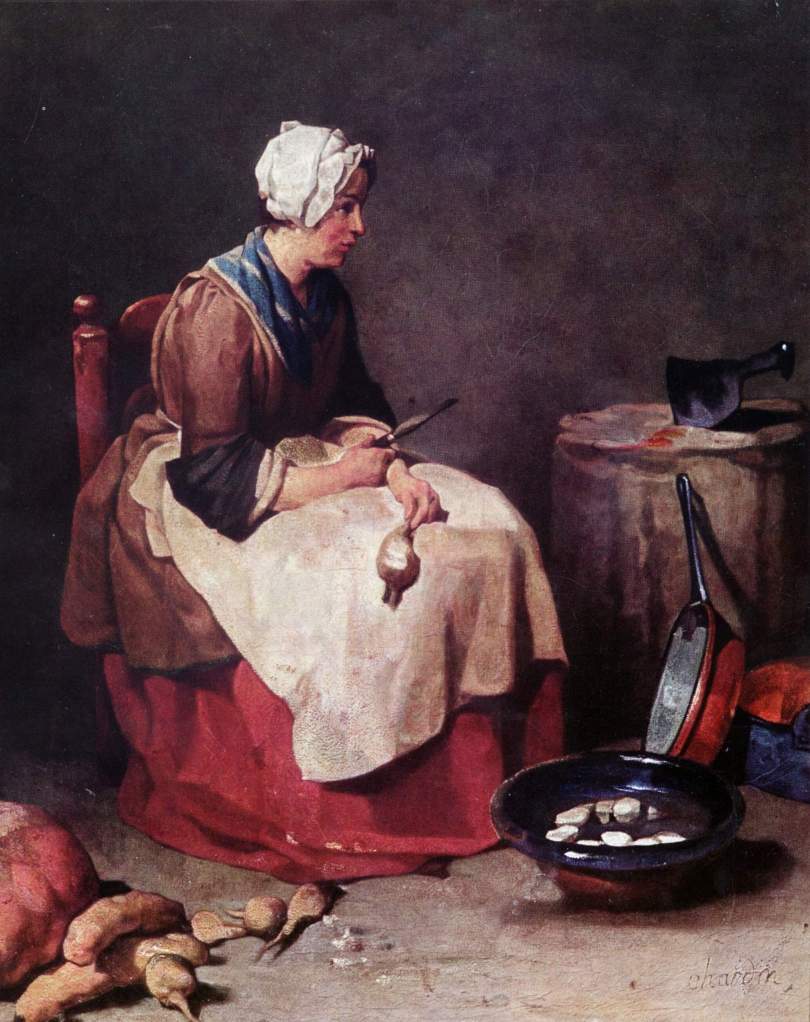Alte Pinakothek [On Foot]
A remarkable feature of 17th-Century Dutch painting is its extraordinary popularity among the Dutch. Everyone bought and hung paintings in their homes, not just the wealthy. English traveller Peter Mundy writes about this popular demand for pictures:
All in general striving to adorn their houses, especially the outer or street room, with costly pieces, butchers and bakers not much inferior in their shops which are fairly set forth, yea many times blacksmiths, cobblers, etc. will have some picture or other by their forge and in their stall.
The Church was not a patron of the arts in this region, and pictures were rarely commissioned: most paintings were sold in the open market, by dealers or artists themselves. This popular demand affected the nature of works created. Portraits and landscapes were common. We also see simple village scenes, outdoors and indoors. Still life paintings (the term derives from the Dutch stilleven) reached new heights. And all this inspired generations of artists in Europe and America in the following centuries.
The Alte Pinakothek hosts an enviable collection of 17th-Century Flemish and Dutch paintings. (There are several other categories, but I found myself walking the rooms with these small format paintings by the Flemish and the Dutch, and some Italian and French paintings from the 17th and 18th Century.) The three hours in those galleries were among the most fulfilling I’ve spent in an art museum.
The rooms were mostly empty. One could stand and observe the works uninterrupted, in silence. I had forgotten what a pleasure this could be. The last art museum I visited, on a weekend in 2012, was the MoMA in New York; the contrast could not be bigger. The series of galleries created an unending pattern of doors and halls, like two mirrors facing each other.
Among the paintings I was drawn to were artists I had not heard of: Jean-Baptiste Simeon Chardin’s Woman peeling Turnips, Adrien Brouwer’s Village Barber Shop, Jacopo de’ Barbari Still-Life with Partridge and Gauntlets.


This calls for a sigh, but you don’t like that. So what to do?
I was a bit taken aback by the description of the U-Bahn on the first page (to some extent) but the description on the last page resembled the picture I hold in my mind of München 🙂 Your post echoed my observations of Munich !! You are quite right that it is tough to find changes there but one change I found was along the Isar near the Reichenbachbrücke. They were making some real changes there. But that was when I went there last time to see a match between Köln-Mün 🙂
Chardin is new to you? He’s one for you, I assure you 🙂
Another supremely enjoyable essay.
What a brilliant piece of writing. I love your style: familiar, verging on the informal, and ever so slightly tongue-in-cheek. I haven’t been to München, and that is perhaps why I was surprised by your description of the U-Bahnhof there. I have often availed the U-Bahn at Berlin, and though the ambiance really depends on the time of the day and the station, I have often found it slightly disconcerting. The Deutsche Oper Bahnhof, for example, on a Sunday afternoon is desolate, and fittingly points out that the U-Bahn after all is the underground, lying beneath the city, and reminiscent of the ‘underbelly’. At times and at certain places, I found the U-Bahn experience ziemlich unheimlich!
An absolutely wonderful essay. I was in Munich in 1976, and probably wouldn’t recognize it now, so I loved seeing your photographs (each one better than the last!) and reading this description. Yesterday I sang di Lasso’s “Miserere mei,” which would have fit quite well with that Michael Jackson memorial…what a strange interconnected world we live in! (p.s. I will send you a piece about a Chardin exhibit in New York, written some years ago, but I think you’ll like it.)
Ah…here is the link: http://www.cassandrapages.com/the_cassandra_pages/2010/03/the-cat-and-the-ray.html
“I carry an obsession for trains that borders on the homoerotic.” If you are (or Colours is) afraid that you are alone in this category, fret not. Surely you have seen us before!
What a lovely ending. I earnestly believe that many an essay can salvage itself with a perfect ending. Not that your essay needed that. But still it makes it all the more delicious.
Parmanu: Beautiful pictures. I particularly like the b/w ones. The absolute stillness of the people in the cafe intrigues me (just like the pic with the lock, you posted a few years back)…
Thank you, all, for your generous comments and the interesting links. Each one was a pleasure to read.
Hello, i think that i saw you visited my weblog thus i came to “return the favor”.I’m trying to find things to improve my web site!I suppose its ok to use some of your ideas!!
Parmanu:
We will be in Frankfurt Hbf for an hour in late November enroute to Berlin from Paris (finally getting our feet wet in Europe after dreaming about it for over two decades). If you could, it would be fun to meet up 🙂